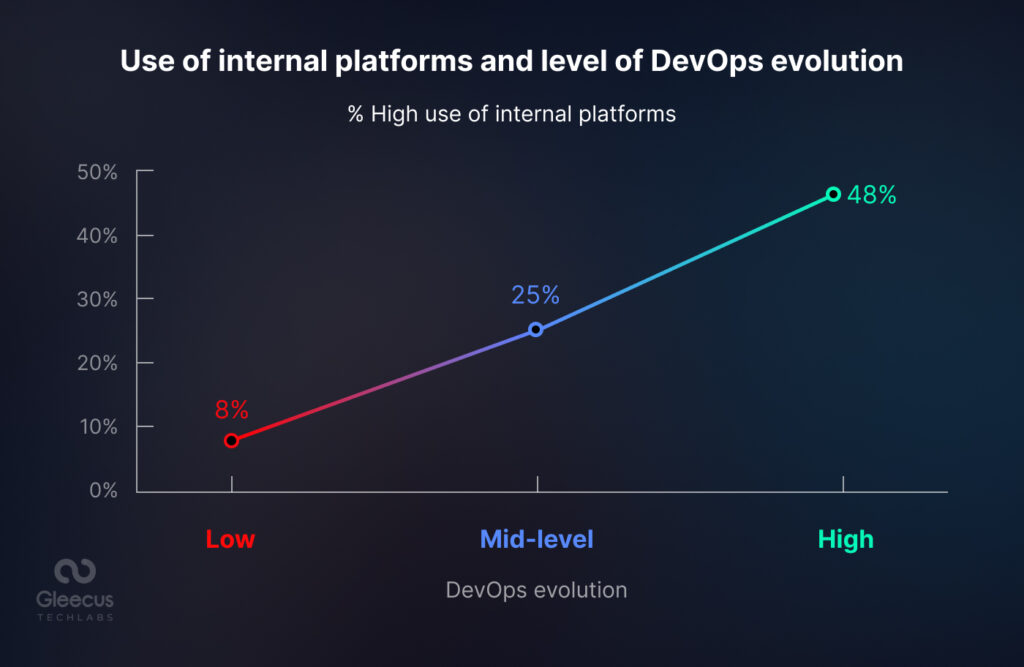True DevOps emphasizes developers should be able to deploy and run their apps and services end to end. However, with the exceptions of large enterprises like Google, Amazon or Airbnb, it is very far from the truth in practice. The main reason being it is unlikely most companies have access to the same talent pool and the same level of resources they can invest into just optimizing their developer workflows and experience. As a result, when a regular engineering organization tries to implement true DevOps, a series of antipatterns emerge.
For example, when the organization decides to implement DevOps and remove a formal Ops role or team. Developers (usually the more senior ones) end up taking responsibility for managing environments, infrastructure, etc. The senior engineer now becomes responsible for the setup and needs to solve requests from more junior colleagues. This leads to the misuse of the organization’s most expensive and talented resources. The organization in turn cannot ship features with the same speed and reliability. Humanitec’s Benchmarking study compared top and low performing organizations based on standard DevOps metrics (lead time, deployment frequency, MTTR, etc.). The key differentiator between low and top performing organizations was in having a platform engineering team building an Internal Developer Platform (IDP).

How Integration of Platform Engineering Accelerates Software Delivery
To cite Puppet’s State of DevOps Report 2021, “The existence of a platform team does not inherently unlock higher evolution DevOps; however, great platform teams scale out the benefits of DevOps initiatives.” IDPs allows developers to preferably pick the right level of abstraction to run their apps and services. As a result, an experienced developer can choose to deep dive with Helm charts, YAML files, and Terraform modules while a junior frontend developer can stick to frontend coding without worrying about the environment the app will run on. They can self-serve a fully provisioned environment to deploy and test their code without waiting upon the senior developer to assist.
Check out how Platform engineering assists in optimizing the potential of DevOps:
CI/CD pipeline optimization and continuous feedback
Continuous Integration/Continuous Delivery (CI/CD) is a fundamental DevOps practice that automates testing, deployment, and integration of updated code. IDPs transform how we think about CI/CD. Apart from streamlining CI/CD pipeline building they offer additional services like environment provisioning, dependency management, and other tools that enhance developer productivity. IDPs makes CI/CD an integrated part of the codebase itself by weaving CI/CD principles directly into the development environment. This in turn frees the developers from mastering yet another syntax and allows them to focus more on their codes.
Infrastructure as Code (IaC) and automation
IaC stands out as a cornerstone in platform engineering, enabling teams to define and manage infrastructure using code configurations. Developers get access to a comprehensive toolbox of resources and controls to accommodate their unique workflows enhancing self-service capabilities and developer autonomy. IaC tools like Terraform, CloudFormation, and Ansible enable automating infrastructure provisioning and management. Automation tools like Kubernetes automate orchestration of deployment of applications across multiple cloud environments, significantly enhancing operational resilience and scalability. Automation reduces manual overhead, accelerates deployment cycles, and minimizes the risk of configuration drift, laying the foundation for efficient DevOps practices.
Scalability, resiliency, and observability
The use of cloud-native technologies and containerization under Platform Engineering allows for greater scalability and flexibility, crucial for handling the increasing complexity of software systems.
- Infrastructure scaling capabilities, such as auto-scaling and horizontal scaling, are integrated into platform designs to accommodate fluctuating demand.
- Resilience engineering principles, including fault tolerance and graceful degradation, are implemented to minimize service disruptions and enhance system reliability.
- Comprehensive observability tools and practices enable real-time monitoring, logging, and tracing of system behavior, facilitating proactive issue detection and resolution.
Steps to Prepare Your Organization for Integrating Platform Engineering
Step 1: Assess the existing DevOps practices and evaluate current state along with infrastructure, and tooling. Make an in-depth SWOT analysis to understand the current level of automation, scalability, and challenges in the software delivery journey.
Step 2: Undertake regular training sessions to educate the core teams i.e. software development and operations to expand their knowledge horizons on the Platform Engineering principles and practices. Foster a culture of learning and ensure that teams are well-equipped with the necessary skillsets and knowledge required to succeed in this new paradigm.
Step 3: Establish clear objectives and goals for the transition to Platform Engineering, aligning them with the overall business strategy and objectives. Set measurable targets for improving automation, scalability, reliability, and developer productivity.
Step 4: Emphasize on developing a self-service platform that empowers development teams to provision resources, deploy applications, and manage environments autonomously. Provide predefined templates, tools, and APIs to development team in order to streamline the development and deployment process.
Step 5: Foster a culture of collaboration, ownership, and continuous improvement across development, operations, and other relevant teams. Encourage cross-functional collaboration and communication to break down silos and drive alignment towards common goals.
Step 6: Collect, analyze, and act upon feedback from stakeholders, users, and other sources via feedback loops and automated monitoring systems. Identify bottlenecks and areas of improvement iteratively refine following platform engineering practices.
Step 7: Establish key performance indicators (KPIs) and metrics to track the progress and impact of the shift to Platform Engineering. Continuously measure and iterate on platform engineering practices to drive ongoing improvements and ensure alignment with business objectives.
Conclusion
Accelerating DevOps through platform engineering is imperative to enterprise business strategy. Streamlined processes and ability to self-service are the fundamental strengths behind Platform Engineering.
no longer just a strategy—it’s a necessity for staying competitive. With streamlined processes and enhanced collaboration, your DevOps journey can reach new heights. At Gleecus, we plan a seamless and efficient transition of your enterprise to Platform Engineering practices through IDPs to attain true DevOps culture.
